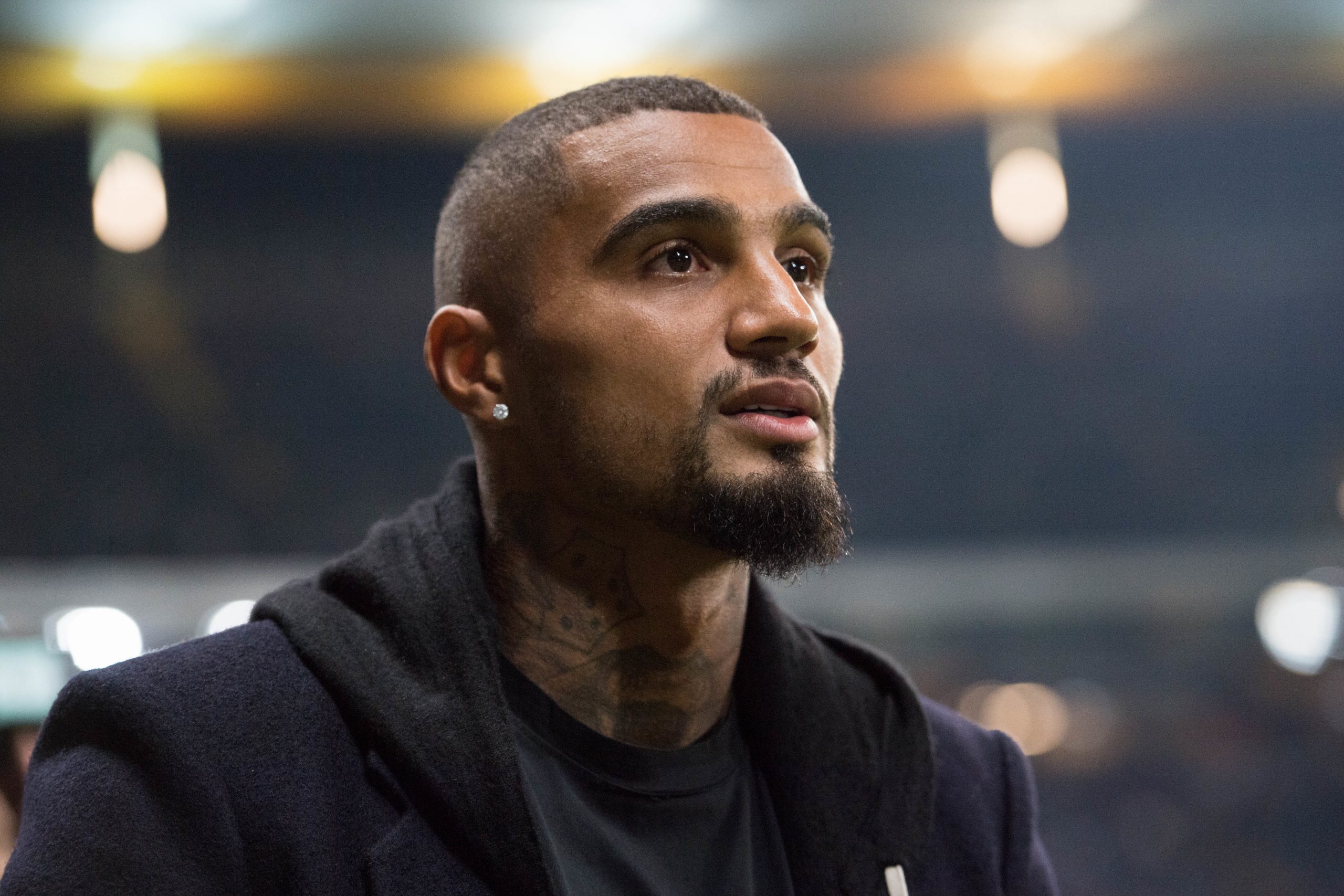Kevin-Prince Boateng? That Kevin-Prince Boateng? Are you sure? For real? Why?
It’s been a long and winding road for Boateng. While his younger brother settled down in Bayern Munich’s defense, Kevin-Prince has spent the better part of his career bouncing around Europe. The former Hertha, Tottenham Hotspur, Borussia Dortmund, Portsmouth, Milan, Schalke, Milan again, Las Palmas, Eintracht Frankfurt, and now Sassuolo player has finally made it though. At almost 32 years old he’s been loaned to the big time. He’s going (somehow) to Barcelona.
This isn’t Boateng’s first time playing for an elite team. He was, if not integral, at least involved with Milan the last time they were a true world power. He started 18 matches during the team’s 2010-11 Serie A title winning season, and then 15 matches over each of the next two years as they finished second and third. But that was a soccer playing lifetime ago. Since then he’s remade himself, shifting from an all action midfielder to an unconventional striker. He has played the bulk of his minutes for Sassuoulo in that role.
His baseline stats don’t really suggest there’s much to write home about though.
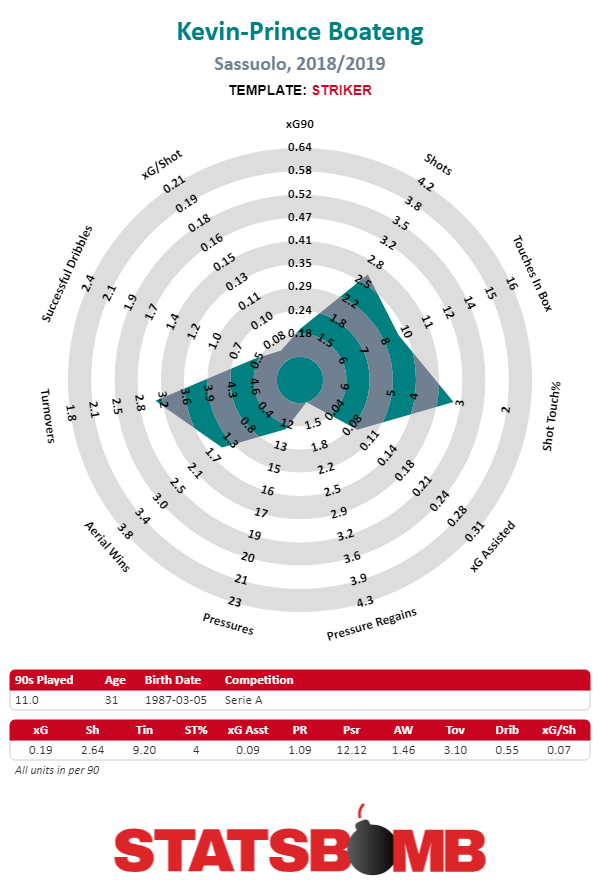
He doesn’t take very many shots, 2.64 per game is extremely mediocre for a forward. And the shots that he does take are terrible. His 0.07 xG per shot is literally off the charts bad for our radars. There’s no worse combination of outcomes for a striker than only being able to manage taking a small number of really unlikely shots.
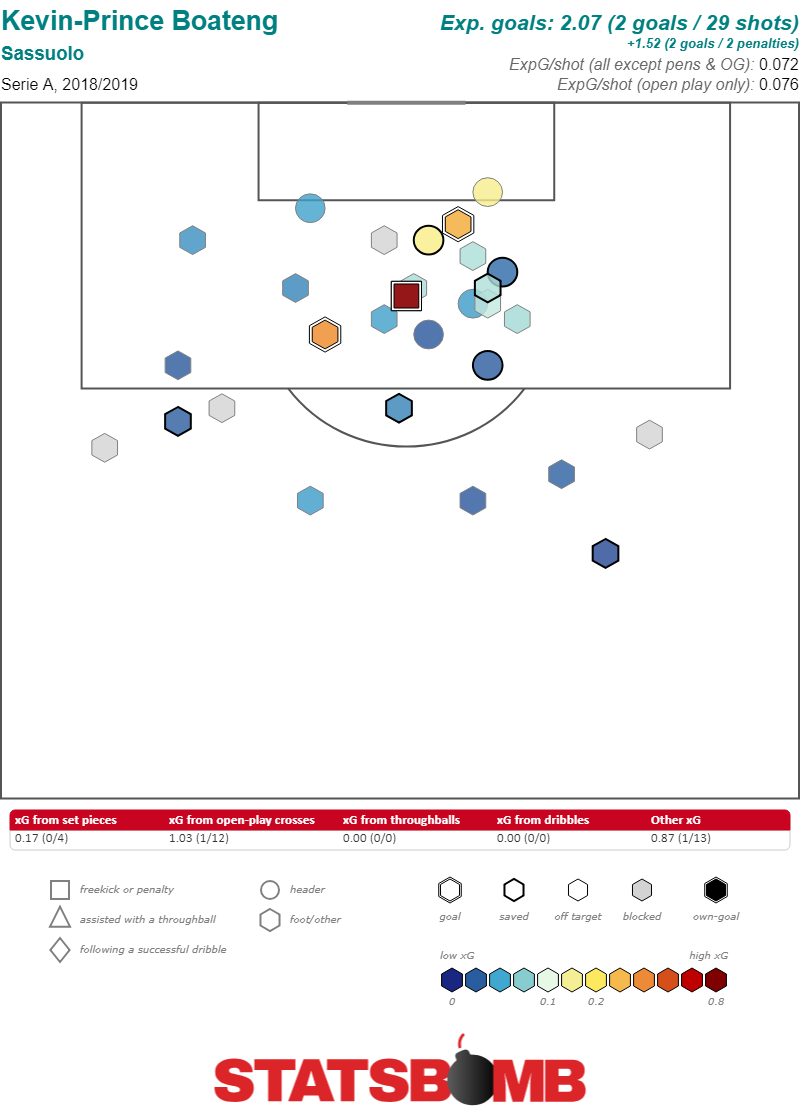
Perhaps there’s something else to his contributions though? Given that he is a former midfielder and an unconventional striker at best, maybe there are some distributional aspects to his play that the numbers fail to account for. Perhaps he’s dropping deeper and creating chances for runners in behind him, or he’s an integral part of an aggressive pressing team, where he defends from the front? If that’s the case it also doesn’t show up in the numbers. Here’s how he appears on the attacking midfield radar.
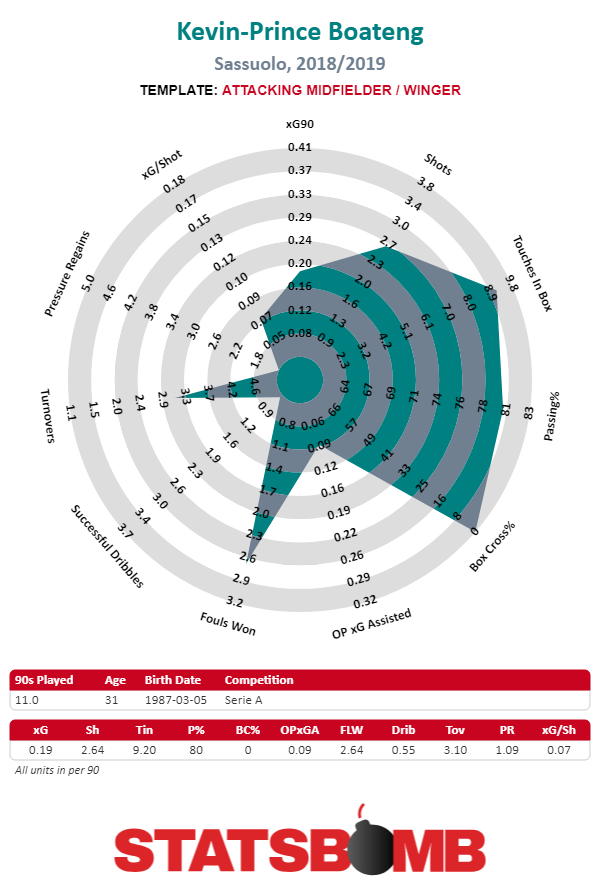
It’s a slightly larger blob, but it’s not actually more impressive. His average number of touches in the box for a striker shows up impressively on the attacking midfielder template, and his pass completion percentage is pretty high. But that’s about it. There’s nothing here that suggests he’s creating a lot of opportunity for others. His expected goals assisted from open play per 90 is an exceedingly low 0.09. If he’s doing something creative with the ball, it’s not showing up in the shots he’s creating for his teammates.
In Boateng’s defense, Sassuolo play the game at a very slow pace. They’re actually slightly more invested in possession that you might expect from Serie A’s 12th place club. They play 533 passes a game, tied with Roma for the sixth most in the league and allow only 442, the sixth fewest. They’re happy to have the ball and not do a ton with it, as long as their opponent doesn’t have a chance to get the ball and attack them. It’s a necessary strategy because when they do give up the ball, they’re completely unable to stop opponents from attacking them.
Despite giving up only 13.30 shots per match, the ninth most in the league, a respectable total, the expected goals they’ve allowed from those shots is a mind blowing, 1.43, tied for the fourth worst in the league. A brief look at their defensive activity map might serve to explain why.
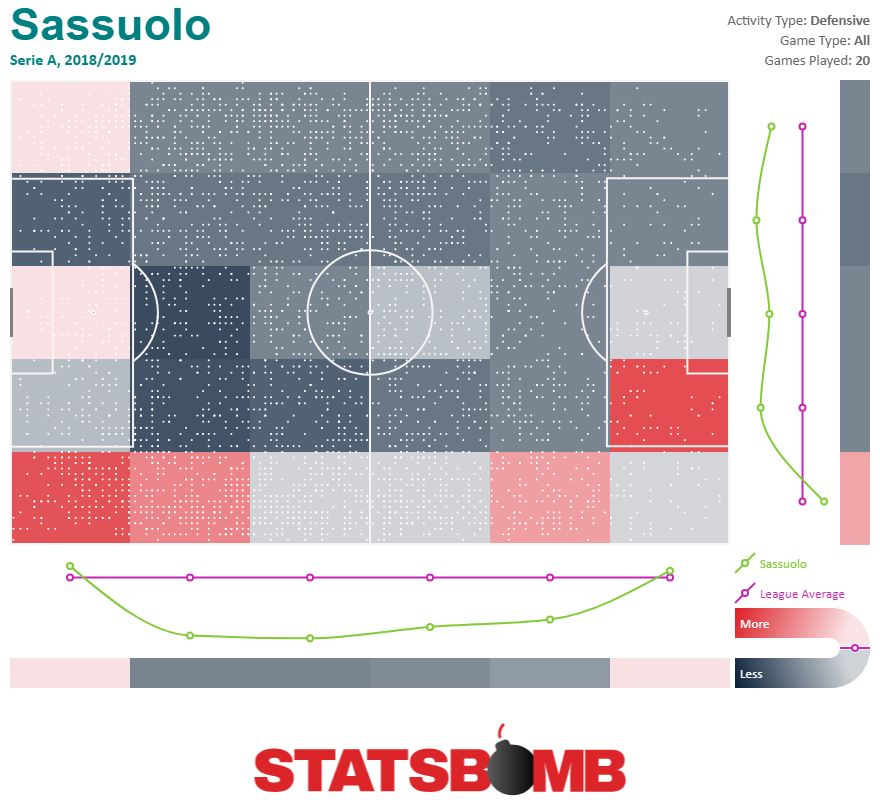
Against that backdrop, Boateng’s defensive contributions from the top look pretty decent. He’s committed to harrying the ball around the halfway line even if the team behind him consists entirely of, well, not much of anything.
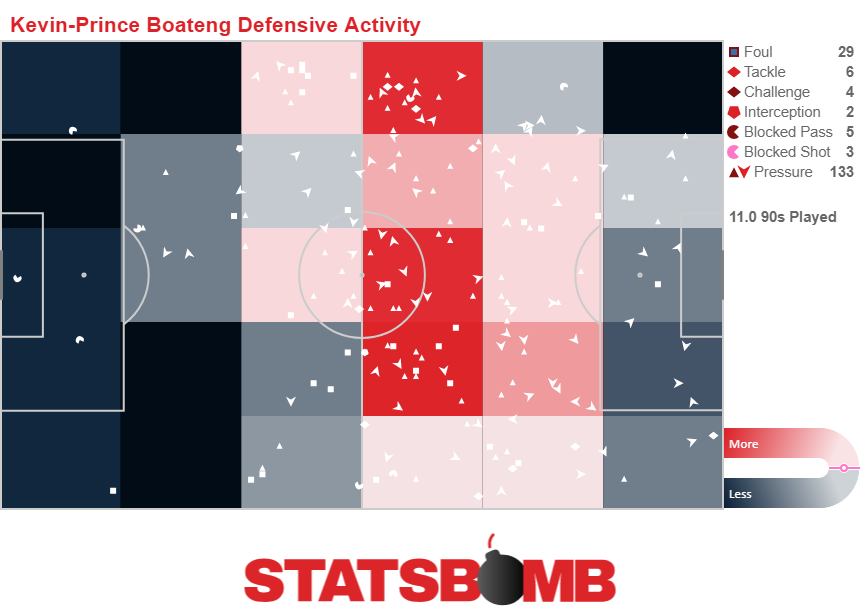
Squint and you can almost see the stylistic appeal for Barcelona. Boateng plays up front for a midtable team that plays slowly and methodically. They insist on working the ball out of the back and are extremely patient in possession. That’s sort of Barcelona-ish. And while they turn all that possession into a mediocre number of terrible shots (a process which Boateng is an integral and negative part of) presumably when surrounded by superstar teammates that won’t be nearly as large a problem.
And defensively you can definitely see a role for Boateng as a closer. If Barcelona have a lead, bringing in Boateng for somebody like Ousmane Dembele or even Luis Suarez to shift that emphasis from attacking to defending makes some sense. Boateng can do that, the trade off will be that he’ll add much much (much much much) less on the attacking end, so much less that the trade off may not be worth it.
The question remains though. Why? It’s true that if you torture the numbers, and the scouting just right you can gin up a narrowly define role that Boateng makes sense in for Barcelona, but he’s not the only player that would make sense in that role. It’s not hard to find players that will willingly defend from the front in a substitute role. It’s especially not hard to find ones that are under 30. And while getting Boateng assures that you’re finding an unconventional attacker who is used to playing in a possession oriented system, it also assures that you’re getting an attacker who doesn’t give you much output in that system.
The benefit of being Barcelona is that there’s a lot of wiggle room to make mistakes at the margins. Going and getting Boateng on loan, whatever the reason, won’t hurt this squad overall. They’ve acquired better players for more money than Boateng who have flopped at providing frontline depth while not slowing the super team down (whither art thou Arda Turan). The main cost though is the opportunity cost. Bringing in Boateng to fill this role means not bringing in somebody younger and potentially better to fill that role.
Slice the numbers just right and it’s possible to make an argument that explains what role Boateng will fill at Barcelona. That’s fine, as far as it goes. But no matter how long you look you’ll never find a good reason for Barcelona going and getting a mediocre 32 year old to be the one to fill that role. That decision will remain a mystery
Header image courtesy of the Press Association
